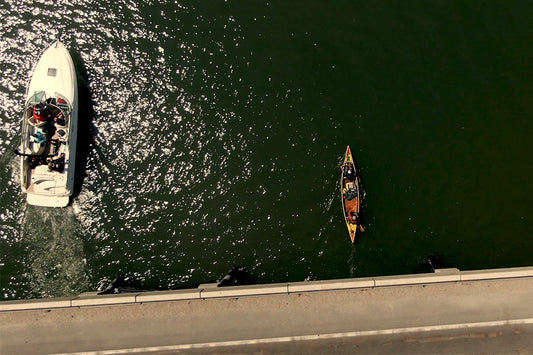Why Layer?
The number one reason to layer correctly for the outdoors is safety. Hypothermia and Hyperthermia occur when either heat loss, or heat gain occur at a faster rate than your body’s natural ability to self regulate. Modern technical clothing and layering techniques allow you to help regulate your body’s core temperature and survive in extreme climates.

Moisture Management Explained
No matter the environment, moisture management should be your main focus when building your clothing system. There are two factors to consider when talking about moisture management; perspiration caused by an increase in body temperature and environmental moisture (i.e., Snow, Rain, Mud, etc). In a backpacking scenario, you will likely experience both. During a hike, climb, or ascent, you will expend energy and as a result your core temperature will rise and your body will perspire to cool you down. If that perspiration isn’t wicked away as you become static, or as the temperature drops, that moisture will begin to freeze. As a result, your core temperature will drop and you may become hypothermic. For the same reason, it’s important to pack a shell to protect you from environmental moisture (i.e., Rain, Snow) reaching your skin.
Choosing a Baselayer
Baselayers are the foundation of your clothing system. Even the most technical jackets can be negated in function by the wrong baselayer. That said, there are three main considerations when choosing a baselayer; fit, construction, and fabric. Because the purpose of a baselayer is to pull moisture from your skin, you want your baselayers to be relatively form fitting. The more contact the material has with your skin, the more moisture the fabric will be able to wick away. Next, it’s important to consider the construction of your baselayers. Choose a baselayer that has optimized seam placement to avoid chafing when wearing a pack, or harness. Finally and most importantly, you must choose your baselayer fabric. In almost all cases, it’s best to avoid cotton (constant, extreme heat can be an exception). Cotton absorbs moisture, dries extremely slow and loses all of it’s insulation properties when it gets wet. The two main fabrics used for baselayers are wool and synthetics. Wool tends to dry slower than a synthetic, but it retains insulative properties when wet and can be slightly warmer. Synthetics are generally lighter than their wool counterparts and dry significantly faster. For Beyond’s Axios Layering System, we’ve found that the lightweight, fast drying attributes of Polartec PowerDry® work best within our system.
Polartec™ Powerdry™

PowerDry® is a bi-component knit synthetic that has been optimized for breathability and rapid moisture transport. The next to skin fabric is made up of gridded fleece channels that pull moisture from your skin into the smooth exterior fabric where moisture quickly dissipates and evaporates into the next layer of the system. The result is a fabric that breathes extremely well when you’re hot and insulates when you’re cold. Also, one major advantage to a bi-component construction is that the wicking properties are construction based and don’t rely on chemical fiber treatments. Chemical treatments designed to help the wicking process can wash out and lose their performance attributes.
Aether Baselayers



Our A1 Aether Baselayers are built out of 4-way stretch Polartec PowerDry® fabric. They feature antimicrobial underarm gussets to reduce odor, and flat-lock seam construction to increase packability while reducing chafing from a pack or harness. These layers have been optimized for moisture transport and core temperature regulation. In addition, we use Polartec Powerdry, Wind-Pro and Alpha in our A2-A3’s to ensure seamless moisture transport from your next-to-skin all the way out to your shell fabric.






0 Comments